#central american birds
Explore tagged Tumblr posts
Note
tree swallow?
I can tell by your profile picture that you might be a fan! Beautiful bird choice.
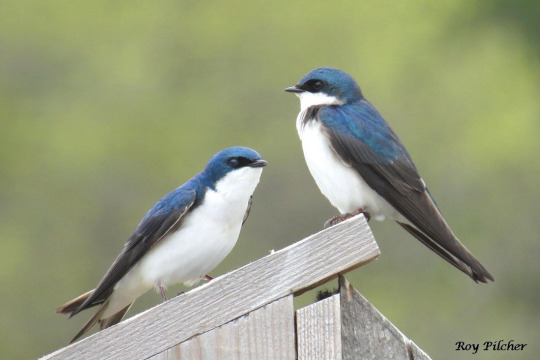
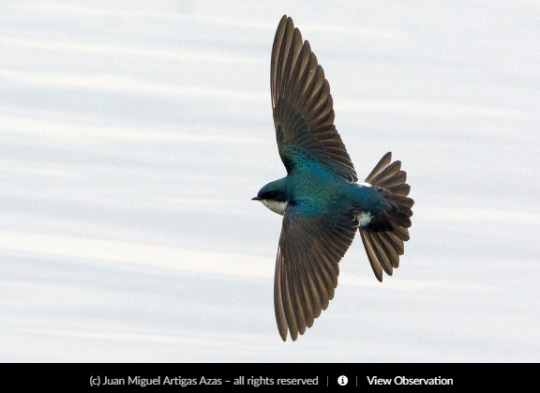
#north american birds#central american birds#migratory birds#tree swallow#passeriformes#passerines#hirundinidae#animal polls#poll blog#my polls#animals#polls#tumblr polls#bird#birds
152 notes
·
View notes
Text
Great Backyard Bird Off - the Americas (poll 6)


Bird Info & Submission Reasons
Common Potoo (Nyctibius griseus)
"My favorite bird! Saw one at the zoo when i was 6 years and got nightmares for weeks. Then found one in the yard of my college dorm, got rescued by the firemen, lovely stump of wet eyes and haunting singing, it has a legend in guarani-tupi mythology. Related to nightjars frogmouths. i think." [just related to nightjars]
Hoatzin (Opisthocomus hoazin)
"It’s one of my favorite birds. Unique evolutionary lineage, digests leaves like a ruminant, has wing claws as juveniles. And I recently got to see one when on vacation!"
Image Sources: potoo (Leo Weiskittel), hoatzin (Rhys Marsh)
#Great Backyard Bird Off#bird poll#animal poll#american birds#central american birds#south american birds#common potoo#hoatzin
127 notes
·
View notes
Text
instagram
Fernando Lara
Russet-naped wood rail
7 notes
·
View notes
Text
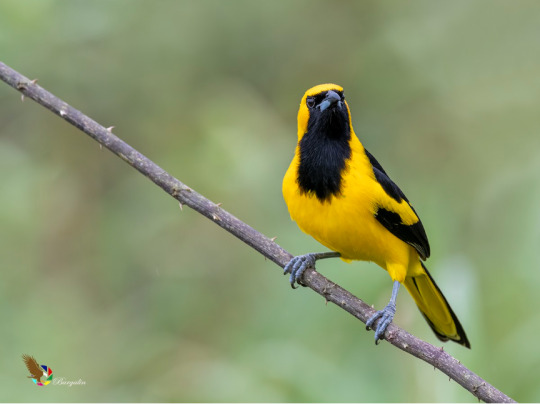
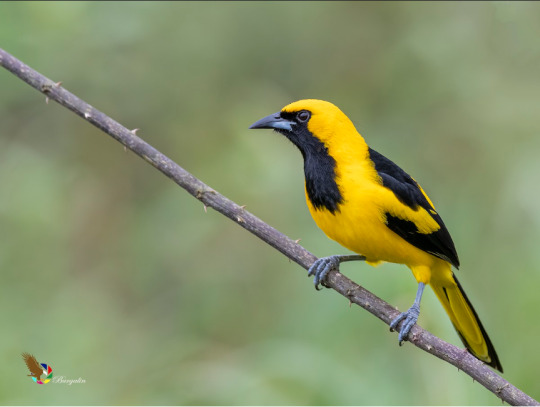
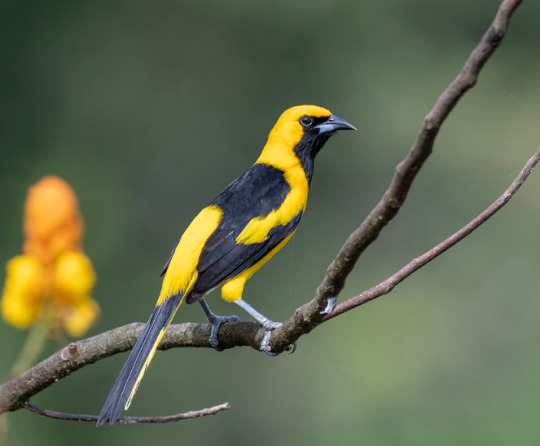
Yellow-tailed oriole (Icterus mesomelas)
Photos by Fernando Burgalin Sequeria
#yellow-tailed oriole#oriole#icterus#icterus mesomelas#central american birds#birds#yellow#yellow birds#wildlife#animals#nature#bird photography
9 notes
·
View notes
Text
For context...
King Vulture (Sarcorhampus papa)



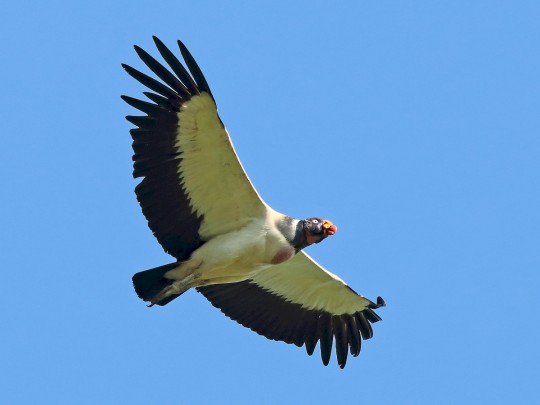

Order Accipitriformes, Family Cathartidae
I adore this bird. They're condors technically, which is to say that they're New World vultures found in Central and South America, going from Mexico to Argentina. They're fairly common, and gorgeous birds at that. Both males and females look like that, which is typical for the birds in this order. And, as vultures, they're scavengers rather than hunters, which is why I hesitate to call them raptors or birds of prey...'cause they're not. In fact, they're called kings not just because they're regal-looking (and were worshipped as holy by the Maya), but also because they make the first cut in a fresh carcass, and other vultures come in to feed after the king has arrived.
Why are they colorful? Not entirely sure, to be honest. Probably an honest signal about health and fitness, which is good for attracting members of the opposite gender. But that's a best guess, nothing more. The featherlessness is for the same reason that all vultures have mostly bald heads: to prevent blood and flesh from gathering in their feathers as they feed.
As for other fun-facts...
They're mute! Vultures aren't exactly noisy in the first place, since they're more hissers and grunters, but king vultures in particular are voiceless!
They're rainforest and savannah dwellers, mostly taking advantage of areas where there's a high concentration of potential prey items. Not huge prey like livestock, though; king vultures tend to stay away from development and agriculture.
Longest living accipiter in a zoo is a king vulture! Vivian from the Cameron Park Zoo in Waco, Texas is 71 years old as of this post, set to turn 72 this year!
And finally, like other vultures, kings practice urohidrosis, an evaporative cooling behavior in which the vultures...y'know what, look it up. It's somewhat gross for the uninitiated, though, so fair warning on that front. It's a bird thing that they do in place of sweating.
Anyway, that's the King Vulture! Let me know if you're interested in more bird stuff; it's literally my profession and passion (outside of comic books and movies, which fall under the category of the latter).

#bird#birds#ornithology#king vulture#sarcorhampus papa#vulture#accipitriformes#cathartidae#new world vulture#south american birds#central american birds
4K notes
·
View notes
Text
BOTD: Harpy Eagle

Photo: Luciano Massa
"Truly impressive birds, Harpy Eagles' legs are as thick as a person's arm and their talons are three to four inches long — the same size as a grizzly bear's claws! This eagle is one of the few diurnal (day-hunting) raptors that have a facial disc, a trait they share with owls such as the Crested Owl. This feathered, concave area directs sound to the eagle's ears, a useful feature as they hunt under the dim rainforest canopy."
- American Bird Conservancy
#birds#harpy eagle#birds of north america#north american birds#eagles#raptors#birds of prey#birds of mexico#birds of central america#birding#bird watching#birdblr#birblr#bird of the day#Harpia harpyja
392 notes
·
View notes
Text
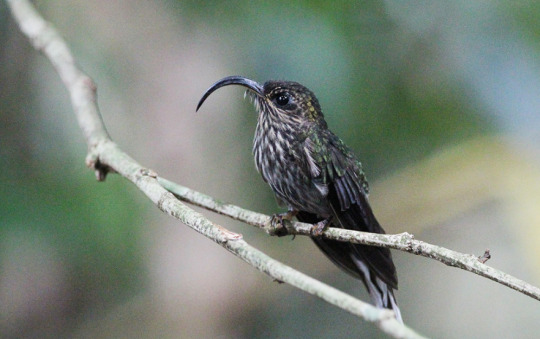
White-Tipped Sicklebill (Eutoxeres aquila)
Family: Hummingbird Family (Trochilidae)
IUCN Conservation Status: Least Concern
The distinctive elongated, downwards-curving and perhaps just slightly goofy-looking beak of this small, dull-coloured hummingbird is an adaptation that allows it to feed on the nectar of plants with curved, tube-like flowers, particularly “lobster claws” in the genus Heliconia, which in turn rely heavily on sicklebills for pollination. Found mainly in evergreen forests across southern Central America and northern South America, White-Tipped Sicklebills, like other hummingbirds but unlike the vast majority of other bird species, utilize an insect-like manner of flapping that allows them to hover and move in any direction while in flight in order to carefully position themselves in a suitable place to extend their beaks and long, flexible tongues into flowers in order to feed, with a diet of sugar-rich, easily digestible nectar being necessary to meet the immense nutritional requirements associated with the extremely rapid flapping that makes their style of flight possible. Unusually for a bird White-Tipped Sicklebills are believed to breed multiple times each year, with males gathering together during the breeding seasons, producing harsh, high-pitch calls to attract females to their location and battling for the attention of mates in mid-air in a form of synchronised competitive courtship known as lekking. After mating, female White-Tipped Sicklebills build nests out of mammal fur, plant roots and spider webs (often hanging from or near Heliconia leaves, allowing for easy access to flowers) into which they lay 1-2 tiny eggs.
--------------------------------------------------------------
Image Source: Here
#White-Tipped Sicklebill#white-tipped sicklebill#sicklebill#sicklebills#hummingbird#hummingbirds#zoology#biology#ornithology#wildlife#animal#animals#south american wildlife#central american wildlife#bird#birds
170 notes
·
View notes
Text


Photo source
Map source
#poll#birds#american oystercatcher#charadriiformes#haematopodidae#haematopus#haematopus palliatus#america#north america#central america#south america
38 notes
·
View notes
Video
Roseate Spoonbill.jpg by Leon Burda Via Flickr: Roseate Spoonbill in flight
#Roseate Spoonbill#Florida#Central Florida#Platalea ajaja#spoonbill#wading bird#pink bird#tropical bird#bird in flight#bird photography#avian#ornithology#wildlife photography#nature photography#wetland bird#marsh bird#coastal bird#long-legged bird#water bird#exotic bird#Florida birds#North American birds#birdwatching#birding#vibrant plumage#colorful wildlife#wild birds#flight shot#open wings#nature lover
21 notes
·
View notes
Text

Central American Pygym Owl
By Shawn McCready
29 notes
·
View notes
Text

2 eastern Kingbirds show their crowns and attack a wet Crow. Harlem meer, Central park.
23 notes
·
View notes
Note
Have you seen a red tail hawk? We call them guaraguao in Puerto Rico


#north american birds#central american birds#red tailed hawk#hawk#bird of prey#accipitriformes#accipitridae#bird#birds#animal polls#poll blog#my polls#animals#polls#tumblr polls#wild birds#birds of prey
105 notes
·
View notes
Text
Great Backyard Bird Off - the Americas (poll 12)


Bird Info & Submission Reasons
Eared Dove (Zenaida auriculata)
"looks quite similar to mourning doves, but don't be fooled"
"They’re like the South American version of mourning dove"
Great Kiskadee (Pitangus sulphuratus)
"They're so colorful and noisy! Their name in Brazil is bem-te-vi which means I see you and is (like its English name) an onomatopoeia!"
"i know these are in the us, but it's only what? the south of texas? their range extends through most of the americas, i think they count!"
"hes so big and i like his colourshes so big and i like his colours"
"I'm paraguayan, we call this bird pitogüe (onomatopeia of their song/noise) and it is say when you hear their song somebody close to you (or even yourself) is expecting a baby, like this is the gossip bird! if a group of people hear the bird call we start poimting fingers. If it is close to your home/street you can be sure somebody is pregnant. very funny bird. "
"They are so loud."
Also known as Benteveo común, in Brazil they're known as bem-te-vi, and in Argentina as benteveo.
Image Sources: Dove (Lukasz Pulawski), Kiskadee (Luke Seitz)
#Great Backyard Bird Off#bird poll#animal poll#american birds#central american birds#south american birds#eared dove#great kiskadee#benteveo comun#bem te vi#bemtevi#benteveo
58 notes
·
View notes
Text
dude a Mexico-inspired blog reblogged the Auraboa art that I rb a bit ago........do they know it's not Quetzalcoatl
#regardless Auraboas and Coatls ARE clearly inspired by Central and South American ancient civilizations so thats fair#mexi-cool if you see this i love you#this bird speaks
6 notes
·
View notes
Text
#ToucanTuesday:

Bird Pendant (Toucan) Costa Rica, Central Region, 4th–7th c. Jadeite H. 2 5/8 x W. 3/4 x D. 1 7/8 in. (6.7 x 1.9 x 4.7 cm) The Metropolitan Museum of Art, New York 1979.206.1138
"Tropical Costa Rica is the habitat of an enormous number of bird species, many of which acquired symbolic dimensions in depictions in stone. This pendant, made of a jadeite of great clarity, features a toucan. Yet its upright stance and folded arms indicate that the figure is anthropomorphic, implying perhaps that it is a masked or transformation figure. Adding to the complexity of the image is a trophy head where the figure's feet should be. Disembodied heads are frequent in Precolumbian Costa Rican art. This pendant is said to be from the Atlantic Watershed region, one of the two primary areas of jade use in ancient times. The other is the northwestern province of Guanacaste. Each area is generally associated with characteristic stylistic features in jade and other antiquities."
#animals in art#birds in art#bird#toucan#Costa Rican art#Central American art#Indigenous art#pre conquest art#sculpture#jadeite#Toucan Tuesday#Metropolitan Museum of Art New York
16 notes
·
View notes
Text
Antique Tractor Calendar 2025!
Do you have your 2025 antique tractor calendar planned out yet? Have you started marking dates for upcoming tractor shows, toy shows, tractor drives and plow days? If you are looking for some tried and true shows, check out my 2025 calendar because, it’s time to start making reservations and marking the calendar for antique tractor fun in the New Year! This calendar includes our favorites,…

View On WordPress
#1850&039;s Farm#2024 Albany Pioneer Days#2025 Midwest AG Expo#395h Fall Harvest Days Antique County Engie & Tractor Show#AETA#AJ&039;s Garden Tractor Jamboree#Albany Pioneer Days#Allis Chalmers#American Thresherman Association Show#Antique Engine and Tractor Association#antique tractor#antique tractor calendar 2025#antique tractor shows#Apple Country Engine and Agriculture Center#Atkinson Ilinois#Badger Steam & Gas Show#Badger Steam and Gas Flea Market#Baraboo#Baraboo Wisconsin#Biggest Little Tractor Show#Bird City Kansas#Bluegrass Chapter of the American Truck Historical Society#Bob Carson#Bryan Ebbenga#Butler Haynes Park#Butterfield Minnesota Steam and Gas Engine Show#Campground#Canadian engines#Central Kentucky Antique Machinery Association#Central States Reunion
0 notes
